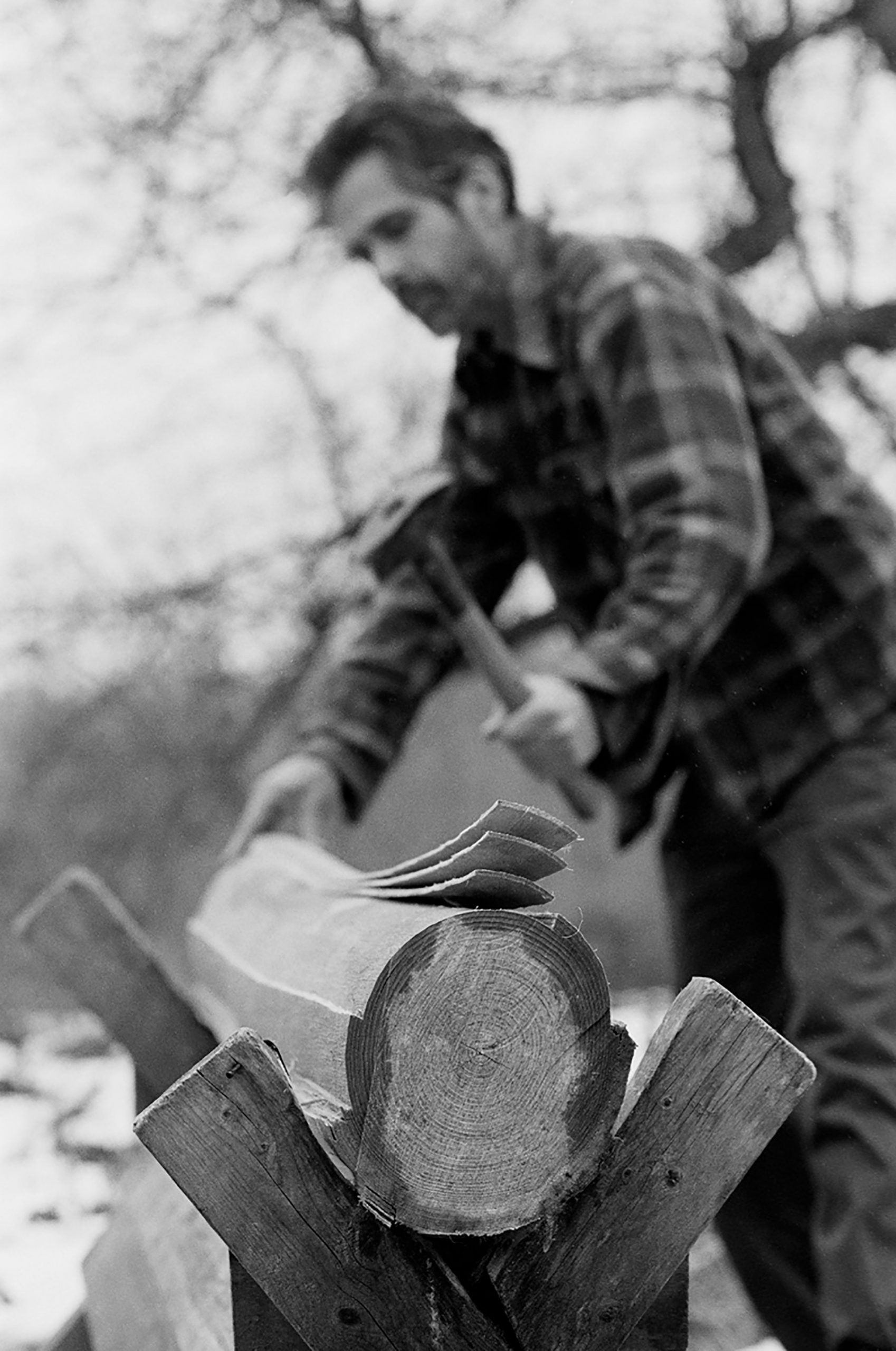

Blackash trees grow in isolated pockets of cool, wet ground throughout the Northeastern U.S. and south eastern Canada. It is truly unique in its ability to separate along it’s annual layers, and in the regions where it grows, it is the basket makers material of choice. To process into basket material, I strip logs 8-10 feet long of their bark then pound them along their length to separate the growth layers into long strips. Hickory trees grow abundantly in the woodlands near my home.From these I saw logs which I split into billets then carve and bend these to form rims and handles. Hickory is said to have the tensile strength of steel.
Though I make many different styles and sizes of baskets, they are all formed by the construction of either a round or square/rectangular base. The base greatly determines the form and function of the basket.
Though not necessary for longevity, I usually apply either a linseed oil finish , or a casein paint finish. For color ,many options are available .
The emerald ash borer which was first noticed in the U.S. in the early 2000s arrived in my area around 2019. Like everywhere else it has been outside of it’s native north Eastern Asia, it has devastated most of the ash trees, including those stands from which I have harvested basket material for decades.Personally, I have secured enough logs to work with for as long as I wish, and I assume other basket makers have done the same. For many Native American tribes the historical and cultural significance of black ash and basket making cannot be overstated. It is indeed very sad to see this iconic forest species disappear. There is hope and some evidence that some trees may be eab resistant and that the ash over time will regain a presence in the forest. For more details , I provide this link: